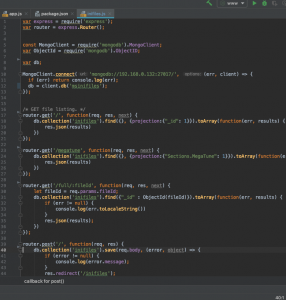
In recent years Webdesigna has been involved more and more in developing and providing JavaScript based solutions.
We don’t believe in a “one size fits all” solution but MEAN and MERN stacks open up a large range of possibilities. Where we used to, perhaps, develop an API around a php framework such as the SLIM/Propel combination there are now new, perhaps better, options available.
Whilst JavaScript on the front end has been something we’ve used for many years, primarily with AngularJS and JQuery, a move to backend JavaScript technologies is relatively recent. Full stack JavaScript, using MongoDB, Express, Angular, Node (MEAN) or MongoDB, Express, React, Node (MERN) is a steadily growing trend in our software development.
Providing Node.js solutions, primarily with Express.js, on our servers has allowed the development of micro service architecture for backend APIs. With MongoDB for fast and simple data storage and retrieval and Express/Node.js providing a fast and efficient data gateway, response times for many operations can be vastly reduced when compared to php solutions.
The choice of AngularJS or ReactJS for the front end is determined by customer preference (if any) and suitability for the specific project. So far, by number of projects, AngularJS still seems to be leading the field but ReactJS is closing the gap.
For security we deploy the majority of our Express services internally to the server and use Apache to provide public access when required. When using a micro service architecture where multiple Express.js services can be used to provide a response this “gateway” approach restricts access to individual micro services.